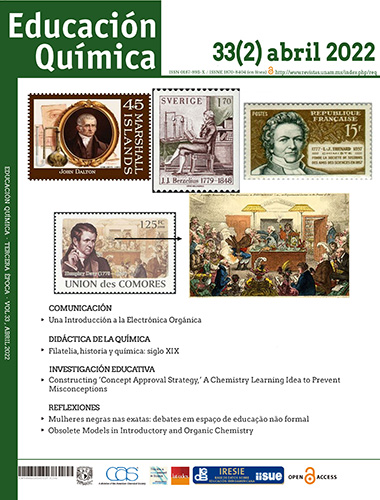Understanding the electrochemical sensors’ figures of merit using a H2O2 sensitive, low-cost ferrite powder first generation electrode
Contenido principal del artículo
Resumen
The development of electrochemical sensors capable of quantifying either chemical, biological, or environmental parameters of interest endorses both the increased academic and educational relevance of electrochemistry. As a result, understanding quantitative electrochemical sensing characterization and performance analysis through analytical figures of merit stands as a curricular requirement from both a theoretical and methodological standpoint as it involves the development of several skills which are highly transferable into further electrochemical education and professional practices. On the other hand, due to popular fields of applications such as non-invasive wearable electrochemical sensors for monitoring electrolytes in sweat on high-performance athletes, students are well-aware of its potential, increasing their willingness to partake in electrochemical activities. Addressing the aforementioned, the experience described herein is divided into two main sections. Firstly, a theoretical introduction regarding electrochemical sensors and electrochemical performance validation techniques known as electroanalytical figures of merit are proposed. Secondly, a hands-on experience using a H2O2sensitive ferrite powder working electrode is carried out by performing voltammetric and chronoamperometric techniques so that students develop a basic understanding of the redox processes occurring at the working electrode surface and obtain analytical performance parameters that allow conclusions to be drawn regarding the ferrite powder sensing capabilities towards H2O2 reduction. As for implementation requirements, the proposed four-hour laboratory protocol is suitable for graduate/upper-level undergraduate physical or analytical chemistry courses and, due to its length, is recommended to be conducted in groups of two to three students.
Detalles del artículo

Educación Química por Universidad Nacional Autónoma de México se distribuye bajo una Licencia Creative Commons Atribución-NoComercial-SinDerivar 4.0 Internacional.
Basada en una obra en http://www.revistas.unam.mx/index.php/req.
